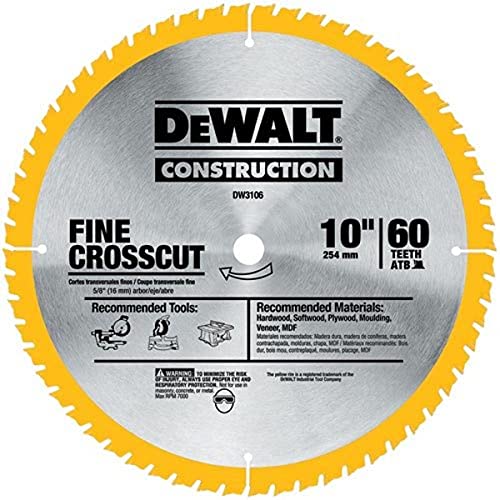Beautiful Plants For Your Interior
Beautiful Plants For Your Interior
The Best Table Saw Blades for Different Types of Cuts:
In summary, use blades with fewer teeth for rip cuts, more teeth for crosscuts, and dado blade sets for dado cuts.

Table saw blades are a crucial component in any woodworker’s arsenal. Without choosing the right blade for different cuts, you risk damaging your wood or even injuring yourself. There are various types of table saw blades available in the market, each with unique features that make them suitable for specific cuts. In this article, we will take an in-depth look at the best table saw blades for different types of cuts.
Before we dive into the best table saw blades for different types of cuts, it’s essential to understand the different types of table saw blades available in the market.
Rip blades are designed to make precise cuts along the wood grain. These blades have fewer teeth than other types of saw blades, making them suitable for ripping lumber.
Crosscut blades are designed to make smooth cuts across the wood grain. They have a large number of teeth that are tightly spaced to make accurate cuts.
Combination blades are versatile blades that can be used for both ripping and crosscutting. They have a medium number of teeth and are perfect for woodworkers who require a balance between ripping and crosscutting.
Dado blades are specialized blades that are used for cutting slots and grooves in wood. They come in different sizes and widths, and you can adjust them to create different widths of cuts.
Now that you know the different types of table saw blades let’s look at the best blades for different cuts:
The Freud 10-inch x 24T Rip Blade is an excellent option for woodworkers who require precise and clean rip cuts. The blade is made with high-density carbide, which makes it durable and long-lasting. The blade has 24 teeth that are specifically designed for ripping through wood with ease.
The Forrest WW10407125 Woodworker II is an excellent option for woodworkers who require smooth crosscuts. The blade has 40 teeth, which are densely packed to ensure accurate and clean cuts. The Woodworker II has a thin kerf, which helps reduce wood waste and improves cutting performance.
The Diablo D1060X Combination Saw Blade is a versatile blade that is perfect for woodworkers who need a balance between ripping and crosscutting. The blade has 60 teeth, which are designed for durability and clean cuts. The Diablo D1060X Combination Saw Blade has a thin kerf, which reduces wood waste and improves cutting performance.
The Freud SDS-0630 Dado Blade is an excellent option for woodworkers who require precise and accurate dado cuts. The blade comes with six chippers and can be adjusted to cut different widths of grooves. The blades are made with high-density carbide, which makes them durable and long-lasting.
Choosing the right table saw blade for different cuts is essential for woodworkers who want to achieve accurate and clean cuts. Whether you require rip, crosscut, combination, or dado cuts, there is a blade out there that can meet your needs. By understanding the different types of saw blades available in the market and the best blades for different cuts, you can make an informed decision when purchasing a new saw blade.
If you want to learn more about table saw blades, ToolzGeek has a comprehensive guide on Understanding Table Saw Blades that you can check out.
Crosscut blades are designed to cut across the grain of wood, while rip cut blades are meant to cut with the grain. If you plan on doing a lot of crosscut projects, it’s best to get a crosscut blade. If you’re mainly working with rip cuts, then a rip cut blade is the way to go.
A combination blade is a versatile blade that can handle both crosscuts and rip cuts. It’s a great all-around blade to have for general woodworking projects.
A dado blade is specifically designed to cut grooves or dadoes into wood. It’s different from a regular saw blade because it has two blades that can be adjusted to cut various widths of grooves.
A kerf is the width of the cut made by the saw blade. It’s important to choose a saw blade with the appropriate kerf width for your project, as it can affect the accuracy of your cuts and the amount of waste produced.
For cutting plywood, a blade with a high tooth count (at least 80 teeth) is ideal. This will produce smooth, clean cuts with minimal tear-out.
No, it’s not recommended to use the same blade for cutting metal and wood. Metal cutting blades have specific tooth geometry and are made from harder materials to withstand the heat generated when cutting metal. Using a wood cutting blade on metal can lead to dangerous kickbacks or cause damage to the blade.
It’s recommended to replace your saw blade after every 50 hours of use or if you notice any dullness or wear on the blade. A dull blade can cause overheating, kickback, or inaccurate cuts.